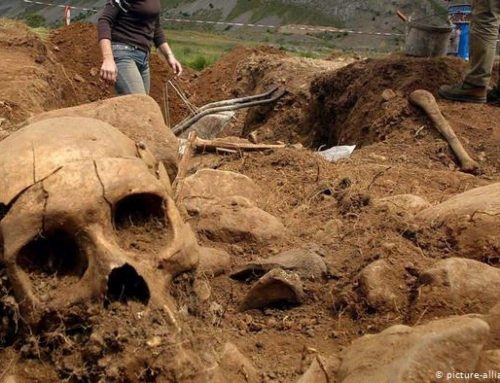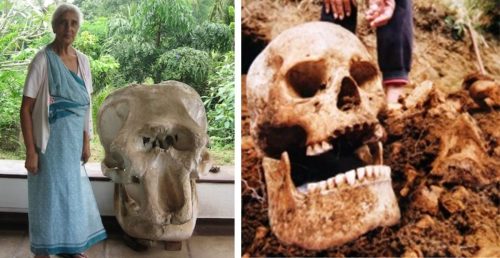In a remarkable archaeological discovery, the remains of a prehistoric man in Sri Lanka have been found, and they date back an astounding 37,000 years. This incredible find, unearthed by the Archaeological Department in Sri Lanka, has left scientists and researchers astounded. The most intriguing aspect of this discovery is the colossal size of the skull, measuring over 10 feet in height. This astonishing revelation has sparked worldwide interest and raises numerous questions about our understanding of ancient humans.

The Discovery
The excavation of the skeletal remains took place in the Balangoda region of Sri Lanka, under the supervision of Dr. General of the Archaeological Department. The discovery has already attracted international attention, with experts from various fields eagerly awaiting the opportunity to examine this ancient relic.
According to Dr. General, “The evidence so far firmly establishes that the skull belongs to an individual who lived approximately 37,000 years ago.” This revelation has the potential to rewrite the history books, challenging our existing knowledge of prehistoric humans.
International Collaboration
To further investigate this astonishing find, Sri Lankan authorities have extended an invitation to a team of British experts to join the research efforts. This international collaboration aims to provide a comprehensive understanding of the individual and the historical context in which they lived.
Artifacts and Clues
The excavation not only revealed the gigantic skull but also unearthed various artifacts, including tools, utensils, and stone implements. These findings offer valuable insights into the daily life and activities of the ancient Balangoda man. Additionally, archaeologists have discovered remains of animals, indicating that the Balangoda people were proficient hunters and gatherers.
Historical Significance
This discovery marks a historic moment in the field of archaeology, as it is the first time a fully intact human skull of this age and size has been found. The significance of this find cannot be overstated, as it has the potential to reshape our understanding of human evolution and migration patterns in South Asia.

Further Research
Further research and analysis will be conducted on the skull and associated artifacts to uncover more details about the individual’s lifestyle, diet, and cultural practices. Additionally, DNA analysis may shed light on the genetic makeup of this ancient population and its possible connections to other prehistoric groups.
The Enigma of the Balangoda Man
The Balangoda man, as this individual has come to be known, remains an enigma, challenging our preconceived notions about the distant past. As researchers delve deeper into this discovery, we can expect to learn more about the ancient inhabitants of Sri Lanka and their place in the broader story of human history.
In conclusion, the unearthing of the 37,000-year-old giant skull in Sri Lanka is a momentous event that has captured the imagination of scientists, historians, and the general public alike. This remarkable find not only offers a glimpse into the distant past but also raises important questions about the evolution and diversity of human populations. As research progresses, we can look forward to gaining a deeper understanding of the Balangoda man and the rich history of prehistoric Sri Lanka.







